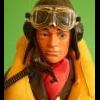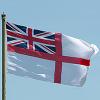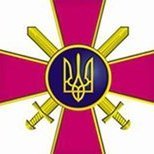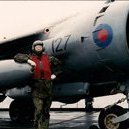Search the Community
Showing results for tags 'MTB'.
-
I've been back into this modelling malarky seriously now for close to 3 years after a 30 plus year break. OK, there were one or two lapses in that time, but nothing major. In the last 3 years I have done a little on the AFV front, quite a few 1/72 and 1/144 aircraft, but have not re-dabbled in a maritime model. I did start a couple of 1/700 Cold war frigates some years back in the form of two conversions of a Matchbox HMS Kelly. One was to be an RN Type 15 Frigate - HMS Rapid, and the other a type 16 Frigate, HMS Terpiscore. I still have these in their semi made state, and they will form a WIP in due course. In the meantime, I decided to wet my appetite on something "simple", or so I thought. Influenced on here by some superb examples of Coastal Forces craft by many including @robgizlu @longshanks @andrewa @seadog @JohnWS and @Courageous (I am sure there are others), I recently picked up a very old boxing of Airfix's Vosper MTB, which along with these two beautiful publications (below), has tempted me to make a start on a Coastal Forces model. Of course, those of you already into this fascinating world will know that the subject can become quite consuming! The two publications I picked up were these. It goes without saying I now want vols 3 and 4 but they must wait! And the model in question is this old girl: Other key bits of research include the John Lambert plans for MTB 379 through 395. One immediate question I would have of those who know this subject well, is that these plans appear to show an extra exhaust vent on the starboard side at the rear. From the internal diagram, this looks correct for the Port side but I suspect it should not be there on the starboard side? Indeed the profile drawings of MGB 380 and 391 in the Coastal Forces series, show this as not existing (assuming the starboard view of 391 is correct). I clearly have much to learn about these, and many other classes of MTB's and indeed MGB's, so hope for advice on the way! A start has been made on the hull, with lower, sides and rear in place (eventually after some struggles). The deck is simply taped for now, and I have also removed the moulded on torpedo guide/supports, as I was not really happy with these as moulded. I suspect there will be other areas I will change/remove, as per some of the other BM'ers I have mentioned already. I am learning from your builds guys! I've also started to remove some of the existing deckhouse moulded on detail, as I would prefer to scratch build these. Also I can see from the plans, and some other builds on here, there appear to be some minor inaccuracies. You will be familiar with these (held with blue tack): Well so far, we have these. Much detail to add I know! I have already modified the front part of the bridge by removing the raised part and scratch building a new doorway. The detail on my copy of the plans is not brilliant, but I think this is fairly accurate. I have also started to improve and clean up the deck vents (is that what they are called?) using a drill and mini dremel tools. One small and one large down, five small and three more large to go! The rear end has had the the locating holes drilled out, ready to remove the moulded on steps and replace with brass wire. As I said above, I would really appreciate any advice/guidance/tips along the way and suggested areas to improve on the kit. I will unashamedly be referring to others past builds on here, for guidance and assistance! Thanks Terry
- 240 replies
-
- 15
-

-
- Coastal Forces
- MTB
-
(and 1 more)
Tagged with:
-
Hi all, I just joined the forum after finding lots of useful info on Coastal Forces here. I bought the Italeri Vosper MTB kit mostly on a whim, fancying building a kit and assuming a larger scale would be easier to pick up, though I now appreciate that the smallest part in any kit will be similarly sized to the smallest part in any other kit. Anyway, I have picked up some tools and glues and have made a start on parts which I’m fairly sure I can carry on with without firmly committing yet to which boat I will actually portray. The only thing I am certain of is that it will not quite be OOB. On the strength of the many recommendations throughout coastal forces builds on here I picked up a copy of Coastal Craft History Volume 1, and I plan to choose a specific boat from the many diagrams based on whichever colour scheme and weapons configuration most sparks my interest. I also ordered the horse drawn Breda, just for options, but it will probably end up fitted (minus the horse) 😀 I remain tempted by the Griffin detail kits, mostly for the additional weapons offered, but as I have never worked with photo etch before I think it may be beyond my skill level at this stage. Once I have figured out a photo host I’ll post some pics of my meagre progress. Lewis
-
I picked up this book on eBay for a couple of quid in the knowledge that it contained some nice drawings, which I planned to knife out and mount in a frame. It arrived today and having realised the age of the book, and how beautiful it is an object, I cannot now bring myself to cut it up. I am yet to read the book, but will do so, and report back once digested. It was first published in 1943, and was presumably written around that time. Perhaps events depicted will date it better. It contains wonderful little nods to history, like the following declaration; And the inscription dates this copy perfectly At 7/6 (about £13 now) this must have been a generous gift in wartime! I thought I would share the images with you so that others can enjoy them also. In addition to these drawings there are a few photos, two of Vospers and a couple of MGBs (Fairmile C and BPC/Elcos (I don’t know which, I’m not up on my MGBs)), but if you own any Coastal Forces reference material you will have seen these photos reprinted already. If anyone wants me to post them I will. Lewis
- 1 reply
-
- 11
-

-
- Coastal Forces
- MGB
-
(and 1 more)
Tagged with:
-
Well with a little bit of mud modelling accomplished to finish the Loyd Carrier and continue work on the much neglected Nagmachon, I'm drawn back to Coastal Forces. I'm conscious that I haven't tried a Coastal Craft model yet, despite having several in the stash. Beefy's build has whetted my appetite BPBC 466 MTB Royal Canadian Navy I feel the need for a bit of "immediate gratification" modelling without any scratching on this one so it's an off with the 72.5ft "1941" Vosper, and I'm going to build "233" instead of "234" (Peter Dickens boat) which the kit features. There are some minor differences that we'll come to. I hope it proves to be an easier exercise than Beefy found. Here's Mark Smith's depiction of 233, as ever inspirational, from Vol 1 of "Coastal craft History", And here's some Wartime pictures, Hooning down Southampton Water!! History She was built by the Berthon Boat Company in Lymington, completed in January 1942. At the time of the above pictures and colour scheme she served with 21st Flotilla, first at HMS hornet at Gosport and then from Summer 1944 at HMS Beehive in Felixstowe. She survived the war, was disposed of in 1945 and was renamed Sea Vixen ending up at Highcliffe sailing club as their headquarters at Christchurch Priory where she was burnt and destroyed in 1971. References Build Challenges 1) The F'wd Oerlikon mounting is perforated, presumably to save weight. I've not been able to find documentary evidence and it certainly doesn't appear in any of John Lambert's drawings, that I can find. I have some ideas on how to do this that involves my newest ,latest, greatest tool.......... 2) The Hull/deck mating. The modeller who built his on 'Scale Modelling Now' used a Perma-Grit Sanding block to file down the underneath of the heavily cast resin deck so as to make it more flexible. We shall see, but regardless I am now the proud owner of said Perma-grit sanding "Flat -file" (get me !) 3) Vickers 0.5in turret guns in the Mk V turret are a nightmare to file and prepare I'm having cold sweats just thinking about it. 4) 233 as depicted carries mines. The MTBs often acted as mine layers and 'Great Little ships' do a set of "A" mines that one of the above pics show. So - let the build commence. The instructions come as a ringbound A4 booklet with history, colour scheme info and picture illustrations as a guide They are definitely not Tamiya!! And you will need external references. The kit is presented in an "A4" sized box, very neatly and safely packaged. The Hull and deck are substantial resin mouldings My kit came with an etched metal stand, the resin one on display happens to be from a BPBC kit , the resin one just seems easier to use during construction. Some careful Whittling using the reverse (noncutting side) of a No 5 Swann Morton blade to "scrape" resin away is necessary to get the hull and deck to snugly fit Some (possiby quite a lot of) filler will be needed.... The Hull is deliberately moulded too long with the expectation that you saw or file to length... It's then intended that the transom be made from card with a template provided. When the Deck and hull are sufficiently "matched" - they'll be bonded with 5min 2 part epoxy and clamped. (Don't forget to drill the portholes through the guides on the inner side of the hull!) Thanks for looking and it's good to be back in the waves again Rob
- 120 replies
-
- 16
-

-

-
- Coastal Craft Models
- MTB
-
(and 1 more)
Tagged with:
-
Thought it was time to create a thread on what Coastal Forces information is available on the web and in printed/book format. As a starter I thought I'd post up this as I hadn't seen this website mentioned anywhere previously. Whilst the football is on I've been having a trawl around the web and I came across this site - Spitfires of the Seas The website hasn't much content, a lot promised so hopefully it will come but the Facebook page has a lot more - https://m.facebook.com/groups/562609010767534 and is well worth looking at if you have a Facebook account. Enjoy! P
- 9 replies
-
- MGB
- Coatal Forces
-
(and 1 more)
Tagged with:
-
Hi all, Quick update ...ive been busy with the ammo lockers ( not finished yet) and dry fitting some scratch built hatches and done some more work on the torpedo tubes...the hatches will eventually match in with the coastal craft deck grey... Thanks ..
-
Hi all, I've been really busy away from the forum for a while... on with this for about 18 months now and moving house inbetween, so a new workspace had to be built in the new house before the build could proceed!! NOW ITS ONWARDS!!😯😯 The wheel house is totally scratchbuilt and and the horrible origional kit deck was all flattened with a Dremel and started up over.. A mix of scratch building and aftermarket parts are still to be done as you can see.. Things still to do include, new mast, hatches, ammo lockers, twin Vickers, ropes, stantions, vents, cowels, cleats etc.. Research for my Vosper 73" 380 (1944 Thornycroft) was taken from the net, various books including osprey publishing and many trips to Telford for inspiration lol😀🤗 All comments welcome and I'll post more pics very soon as the build continues..!!! HAPPY MODELLING!! Hi all, Quick update ...ive been busy with the ammo lockers ( not finished yet) and dry fitting some scratch built hatches and done some more work and the torpedo tubes...the hatches will eventually match in with the coastal craft deck grey... Thanks ..
-
This is the Coastal Craft resin MTB 234 Kit with Gunthwaite figures, bit of a change of scale for me, and a really tricky paint scheme to get masked... Lots of extra little details here and there, but a nice break from scratch building capital ships. Andrew MTB234-8
- 48 replies
-
- 67
-

-
Here is PT495. It was an 80' Elco MTB and it is configured as it looked during the Battle of Surigao Strait in Oct of 1944. It was part of MTB Squadron 33 (RON33). She was named "Gentleman Jim" after a crewman who was KIA in July of '44. Later, on the night of Nov 19/20 '44, while transport a group of Alamo Scouts to a landing behind Japanese lines, the 495 boat survived a near miss from a bomb dropped by a Japanese float plane. One crewman died and all the rest were wounded, including my friend. With the help of one of the Scouts, he survived and returned to the States for a lengthy recovery.The kit is the 1/35th Italeri PT596 that was backdated using information and photos provided, in part, by a crewman who was aboard that night that I got to know as a result of my research. This was built not long after the 596 kit was released so most backdating items were built from scratch or made from molds I made. The colors are WEM. Please excuse the odd backgrounds. All lettering and markings were painted using custom stencils. These photos were used to strip away the backgrounds while generating some posters I made for my crewman friend and his family. Comments welcome.
- 18 replies
-
- 30
-

-
With the build of the Land Wasser Schlepper drawing to a close it's time to pull something out of the stash. Going from a tracked floaty thing it would appear to be time for a "Full Floaty". What is lurking on the horizon: Model? check Eduard PE? check Italeri munchkin crew? check Brass barrels for the gun tubs and the Oerlikon? check ready to roll.......................................................
- 192 replies
-
- 2
-

-
- MTB
- floaty thing
-
(and 1 more)
Tagged with:
-
This was just posted on a Facebook group I belong to - it is a Royal Navy MTB based at Hvar, Croatia, in 1943. There is a small number '97' on the wind break, but does that mean it is MTB 97, or is it a squadron number? Can anyone identify the boat and what colour scheme it might be wearing, please?
-
Continuing my mojo relieving builds I have recently completed the Italeri 1:35 PT-109, just added the Italeri crew set to the standard kit. Had a few problems with the paint bubbling in areas, but I'm quite pleased with the end result. The kit was reviewed way back in 2013, HERE, better late than never.
- 31 replies
-
- 25
-

-
Tupolev G-5 MTB Merit International 1:35 The G-5 was a Soviet motor torpedo boat built before and during World War II. Approximately 300 were built, of which 73 were lost during the war. Four were exported to the Spanish Republican Navy during the Spanish Civil War and others were transferred to North Korea after the war. Three were captured by the Finns, but only two were used before all three had to be returned to the Soviets after the Moscow Armistice in 1944. The class was an improved and enlarged version of the Sh-4-class motor torpedo boats which were derived from a design by Andrei Tupolev, the noted aircraft designer. It was intended to use Soviet-built engines and carry larger torpedoes than its predecessor. A prototype was designed and built by TsAGI the Central Aero-hydrodynamic Institute) in 1932–33. As its intended engines were not yet available two 1,000 bhp (750 kW) Isotta-Fraschini engines were imported from Italy. Unarmed, and with a partial fuel load, it achieved a maximum speed of 63.5 knots (73.1 mph; 117.6 km/h) during its trials in the Black Sea during 1933 and the decision was made to place it into production. The G-5 used a single-step, hydroplaning design with a whaleback upper hull. It was mainly built from duralumin which saved a significant amount of weight, but greatly complicated its use in service because of duralumin's susceptibility to galvanic corrosion in salt water. One captured Soviet torpedo boat commander said that G-5s could only be kept in the water for 5–7 days during the summer and 10–15 days during the winter before it had to be removed from the water and treated with anti-corrosion measures. The hull was divided into three compartments by two transverse bulkheads. The superstructure was very small to reduce top-heaviness, and crewmembers could not stand up inside it. Designed to use a version of the Mikulin AM-34 aircraft engine adapted for maritime use as the GAM-34. The two engines were fitted in the forward compartment of the hull. Each engine had its own transmission and drove a bronze propeller .67 m (2 ft 2 in) in diameter. The initial version of the GAM-34 was less powerful than planned at only 675 bhp (503 kW) and the initial Series 7 boats could only reach 45 knots (52 mph; 83 km/h). However the minimum speed was 18 knots (21 mph; 33 km/h) which caused a great deal of trouble when trying to moor and when manoeuvring in close proximity. The two torpedoes were carried in troughs set into the rear deck in a manner derived from that used by the British WW I-era coastal motor boats captured by the Soviets during Russian Civil War. The torpedoes were pushed off the stern by an arbor with a bell-shaped head that was activated by an explosive charge, but the torpedo motor was not activated until a wire trailing from the boat snapped, giving the boat time to turn away from the target. This launching system was very light, but it required additional training to properly aim the torpedo and prior coordination when making massed torpedo attacks to prevent the boats from ramming each other or the torpedoes. The gun armament initially consisted of a single 7.62 mm (0.300 in) machine gun, but this was upgraded to a 12.7 mm (0.50 in) DShK machine gun in later models. Some later boats carried two DShKs although the mounts varied; some were placed in a tub in the forecastle, but others carried theirs in a rotating turret behind the superstructure, above the torpedoes. Some boats carried 82 mm (3.2 in) ROFS-82 or 132 mm (5.2 in) ROFS-132 rocket launchers in fixed mounts above and behind the wheelhouse. The Model When this kit was first announced it was met with a fair bit of surprise, be it a very welcome one. The kit comes in quite a small box for the scale, as it’s not a very big craft, especially when compared with the similarly scaled Vosper and US PT boats released by Italeri. What there is though is beautifully moulded, with some very fine detail on the hull and small superstructure. On opening the box the modeller is confronted with six sprues of grey styrene, the two part hull, the moulds of which must have taken some machining to get all the well rendered curves reproduced, a single piece bridge structure, a sprue of clear styrene, a small sheet of etched brass and a smallish decal sheet. The biggest disappointment is the complete lack of internal detail, which seems to be coming a bit of a trademark for Merit. It’s like they get bored of a subject and just release as is, without any further thought on what the modeller might like to see in a kit. This does give the scratch builders and aftermarket companies something to do, but it would have been nice to have some included. Construction begins with the fitting of a small cross member just aft of the bridge opening on the inside of the upper hull, and the opening up of three holes on the upper deck. The upper and lower hulls are then joined together before being turned upside down for the two propeller shafts, which are moulded complete with their support bearings, and the two propellers. The hull is turned right side up and the two rudders, with their separate steering wire attachments fitted. Each of the three rear mounted torpedo rails are made up of two parts. These are then fitted to the centre and sides of the torpedo troughs. The transom mounted support braces are then attached, followed by to access hatches and the torpedo support cradles. The engine compartment hatch, front machine gun tub ring and forward access hatch are all glued into place, whilst along each side there are two hull strakes fitted. The various vents, hatches are attached to the sides, with the engine room clear skylights and hatch handles being fitted to the deck. The deck is also fitted with the various cleats, bollards, handrails, and boat hooks. Staying with the deck fittings, the ventilators, jack staff, torpedo trough fittings, ensign staff and the two fuel tank racks are glued into place. The three fuel tanks are each made up of upper and lower halves, which, when assembled are fitted to the racks fitted earlier. The tanks are then fitted with the eight sections of pipe work, six of which lead to the inside of the deck via the torpedo recess. Each of the long exhausts are then assembled from fourteen parts and attached to each side of the deck. At this point, we finally get to build the primary weapons of the boat, the two torpedoes. Each of them is made up from upper and lower halves, four part contra-rotating propellers, (the propellers blades being etched brass). The propellers are sandwiched between the two halves of the body, with the separate upper and lower propeller guards being attached. Each of the two DShK heavy machine guns are assembled, each made from a single piece barrel/breech, to which the rear mounted firing handle is attached, along with two fittings for the mount. The triangular mount is then fitted, along with the counterweight and three piece ammunition tank. The large searchlight is then assembled, with the mounting cradle made up from four parts and the searchlight from another three. The bridge structure is then fitted out with the five windows and top mounted screen, followed by the torpedo sighting plate, various vents, navigation lights and four hand rails. The torpedo sight is then fitted to its plate, followed by the searchlight, four piece mast, and the rear mounted gun tub, made from four parts, to which a previously assembled DShK is fitted. The forward gun tub is made from five parts and fitted with the remaining DShK. To complete the model the torpedoes, bridge and forward gun tub assembly are all fitted and the model displayed on the five piece stand, which comes complete with nameplate. Decals The smallish decal sheet contains a pair of Soviet Naval Ensigns, one straight, the other slightly wavy. The rest of the sheet contains three of each number 1 – 9 and ten zeros, to make up any numbers the modeller wishes. Although the boxart shows the two boats without numbers, it will require some research to determine what numbers were used. Conclusion This is a great looking kit, and from the build progressing on Britmodeller as I type, it looks like it goes together well. As mentioned above, you will have to add some interior as there are a few areas that make the whole boat see through. Fortunately there are some photos available that will help with this. All in all though, this will make into a very interesting and unusual model. Highly recommended. Review sample courtesy of UK Distributors for
- 3 replies
-
- 2
-

-
- Pocketbond
- G-5
-
(and 2 more)
Tagged with:
-
One of the things I'm missing from my practice builds is a boat or ship. - after several years with little building I allowed myself 10 before my self critique become self criticism and crying in a cupboard, I'm currently on #8 (i suppose #10 will have to be a choice between an AV or a car...) Don't fancy going back to tiny Sweeny 700 scale, nor even the less taxing 350s, so I make a shortlist of 72/48/35 kits that won't just the bank or be huuugggeee eg. Airfix MTB or Rescue launch (or Revell equivalents), Tamiya PBR, Revell PCF. Anyway today I spotted a nice online price for the PCF and am tempted. I know it's a old kit with basic internals and details but it's supposed to be a decent effort shapewise and easily upgraded even without using AM parts. WIPs and references are rather few and far apart though so I was hoping for pointers to decent articles and threads to shorten the search. ... Thx in Advance D.
-
We've got a fantastic offer on the 1/35 Vosper MTB 74 'St. Nazaire Raid' plastic model kit from Italeri right now, with 40% off for a massive saving of £40!! This fantastically detailed model of a real life British Motor Torpedo Boat used during the St Nazaire Raid in World War II could also be complemented nicely with Italeri's 1/35 Vosper MTB Crew figures set which has 10% off! Hurry now while stocks last! For more info, check out our newsletter here.
-
Coastal Craft History Volume 1 Coastal Craft Histories This new book from Coastal craft, entitled Vosper Torpedo Boats from the 68ft PV boat to MTB538 is the first in, hopefully, a series of books covering all of Britains Coastal Forces. The second in the series is already complied and due to go to print shortly. The book is in landscape format allowing authors the space for the excellent side views. The profiles and text are by Mike Smith with the editor being none other than Neil Robinson. All the profiles are produced from those of John Lambert with his co-operation. The book begins with a short piece about the first Vosper private venture, the 68ft motor torpedo boat. This is followed by a forward and information about the book itself, what the profiles were based on and the resources from whence the wartime photographs came. Then there are short articles on the following:- The history of Vosper Torpedoes and torpedo boats Hull and wheelhouse design Engines Torpedoes and depth charges Armament Details of Vosper batches Included in the above articles there are suitable profiles of various boats and the ever changing profile of the 68 footer MTB 102. The next thirty five pages show the many and various colour schemes used on particular boats. Each of the full colour profiles, some with top down views are beautifully drawn comes with information about the particular boat, as well as the colours used. There are also useful notes on the references used if the modeller would like to go further in their research. At the end of the book, there is a page dedicated to listing the great many books that are available followed by one page covering the kits and detail sets that are available from Coastal Craft, with the last page showing whats to come in the next book. Conclusion This book is an absolute must have for anyone interested in the Vosper boats of WWII. Whether you have any kits or not, but of particular use with those who have the any of the available kits who would like to produce something not out of the box, especially as there is so much available aftermarket for the 1:72 fraternity. Those modellers who choose to model in 1:35 will need to hone their scratchbuilding skill, but this book will certainly be a help as to what equipment and modifications are appropriate to which boat. Very highly recommended. Review sample courtesy of
-
I am building 1/72nd scale model hulls in glass-fibre for some WWI and most WWII and later CF types over the coming months. The two scales have been chosen to match the most popular scales of the model kits currently available from the likes of Italeri, Revell and Airfix etc. so that modellers can add their favourites to their existing fleets of PTs, HSLs, MTBs, MAS and E-Boats. In 1/72nd scale I have done; Fairmile B, Fairmile D with and without scallops, 72ft RN HDML and RAN 80ft version, Australian 80ft ambulance launch like Krawarree, USN WWI and WWII Subchasers, AMS/YMS/BYMS minesweeper, RN 80ft WWI Elco ML, USCG 83ft Wheeler, HAM class minesweeper, Camper & Nicholson long MGB, Ford Class SDB. The list of wartime boats is very long and will include; all RN long and short MTBs and MGBs (at least 20 different boats), RN SGB, MLs, all 4 MFV's, 105ft MMS, all RAF HSLs, 56ft and 60ft RAF GSP, hopefully some RAF STs and RSLs, most RASC vessels (I still need plans for several), USN PTs, USAAF 63 and 85ft AVRs, also a German R-Boat and an FLB-V and the Australian Halvorsen 62ft fast supply launch. Post-war hulls will include; RAF Vosper RTTL, RAF 63ft GSP, RAF 96ft Krogerwerft D-Boat, RN Brave, Dark and Gay class FPBs, Ton class minesweepers and also some foreign boats such as the Nasty Class PTF and possibly German Jaguar and Schutze Classes. I have also already done a few in 1/35th scale; Fairmiles B & D and the 72ft HDML. I intend to continue this project over an extended period and I welcome requests to move any favourites to the front of the queue. I have an album of some previous builds; http://www.flickr.com/photos/25721684@N00/sets/72157632269542118/ Regards, Christian.
-
Having purchased the Italeri 1/35 Vosper MTB i was wondering if there are any good sites with detail photos etc? TIA

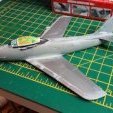

.thumb.jpg.b4a5069fd2c2dd5708ce1694345c5b11.jpg)

